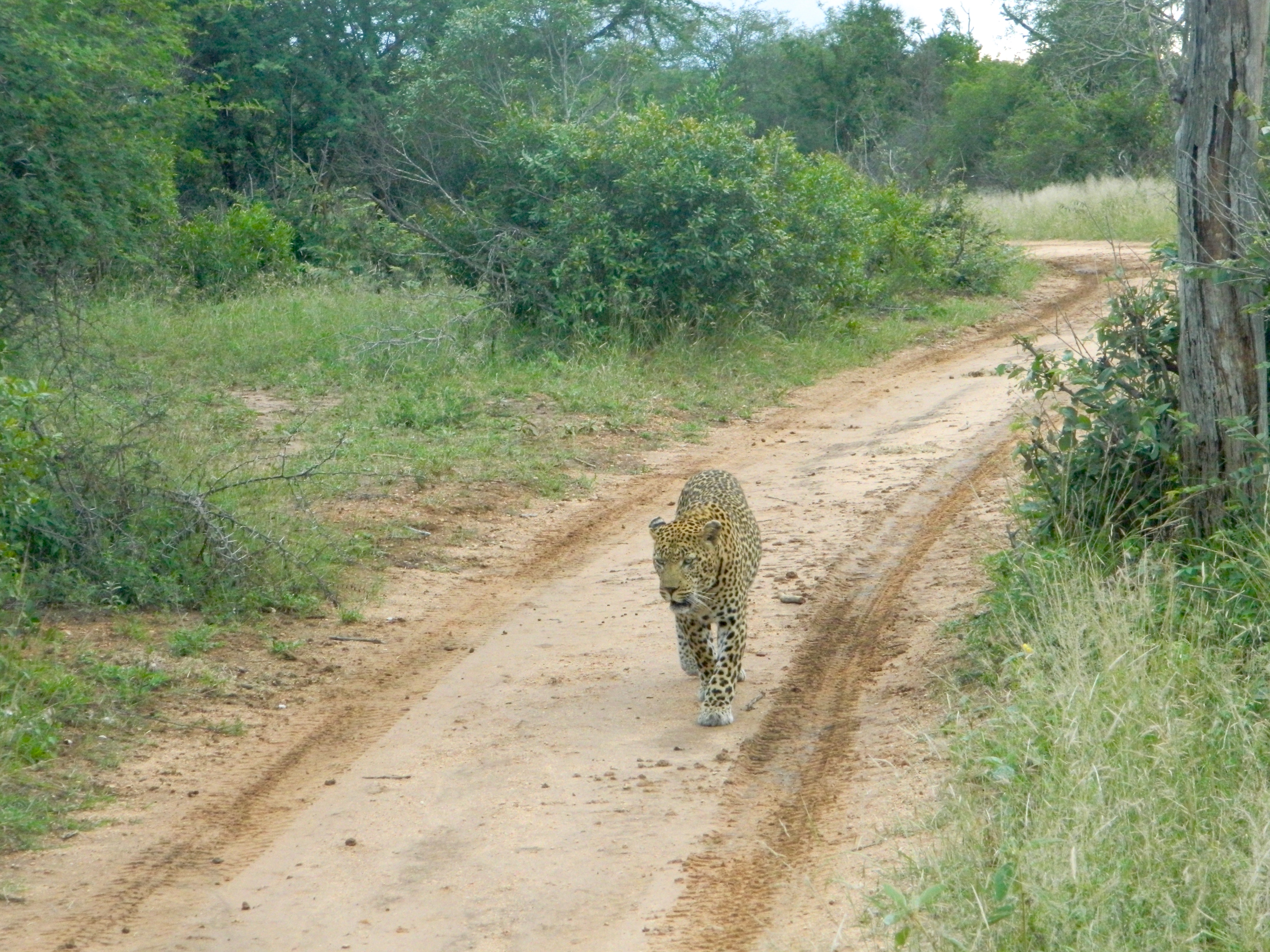Sabi Sand Game Reserve, Mpumalanga, South Africa
A male leopard wakes from his nap and stretches lazily.
Three safari cars—Land Rovers, I think—have parked just meters away.
The leopard yawns, stretches again, and begins to move.
His eyes are amber-grey, and he gives us only the briefest of disinterested sidelong glances before deciding to ignore us entirely and amble along the road. He remains impervious as the three cars crisscross his path to allow their passengers optimum angles—a bizarre new animal behavior pattern to which he and many other species in the bush appear wholly adapted.
At one point he passes so close to my side of the car that I can see the individual hairs that make up his spots and the supple play of muscle beneath his skin.
***
There is something both bizarre and breathtaking about finding yourself within hand’s reach of a wild animal and knowing that you’re safe.
That is the wild-tame peculiarity of safari. Or, at least, of my safari.
Over the course of three days, my family and I found ourselves nose-to-nose with elephants, zebra, giraffes, leopards, and lions, thanks to the skill of our third-generation guide and the collaboration of the game reserves. We observed hippos, white rhinos, hyenas, and vultures from just a couple meters away.
The sheer size, power, and wildness took my breath away—and it made me wonder about this paradoxical dynamic whereby wild animals accept wacky, camera-toting tourist behavior as the norm and an ecological system seems to evolve to accommodate it.
Predator and prey alike enjoy the ease of travel on dirt roads cut for the convenience of safari trucks. A mother leopard defends her cubs against hyenas as you would expect, but observes our approach with indifference. Some—though not all—impala (a species of adorable antelope) fail to shy away at the no-longer-alien sounds of car engines and human voices.
One thing is certain: This industry is a boon for the anti-poaching efforts across the safari-regions of the African continent. It brings revenue to places that desperately need it, and government protection to the wild animals responsible for it.
Perhaps even more important, it has the potential to raise awareness about and appreciation for species and environments slipping into endangerment or collapse. A key element of environmental protection not to be underestemated.
I hope to share more as I learn more, but in the meantime, here are some “up close and personal” photos of the wild animals that allowed us to share their space:
| Mama leopard with cubs. |
| Fun fact: A herd of zebras can also be called a dazzle. |
| “They look at you like you owe them money.” — Unknown, on water buffaloes |
| No introduction needed. |
| Who wants to go for a swim? |
| So many elephants! |
| The animal that evolution seems to have forgotten. |
| My brother, the rarest of the wild animals. |
